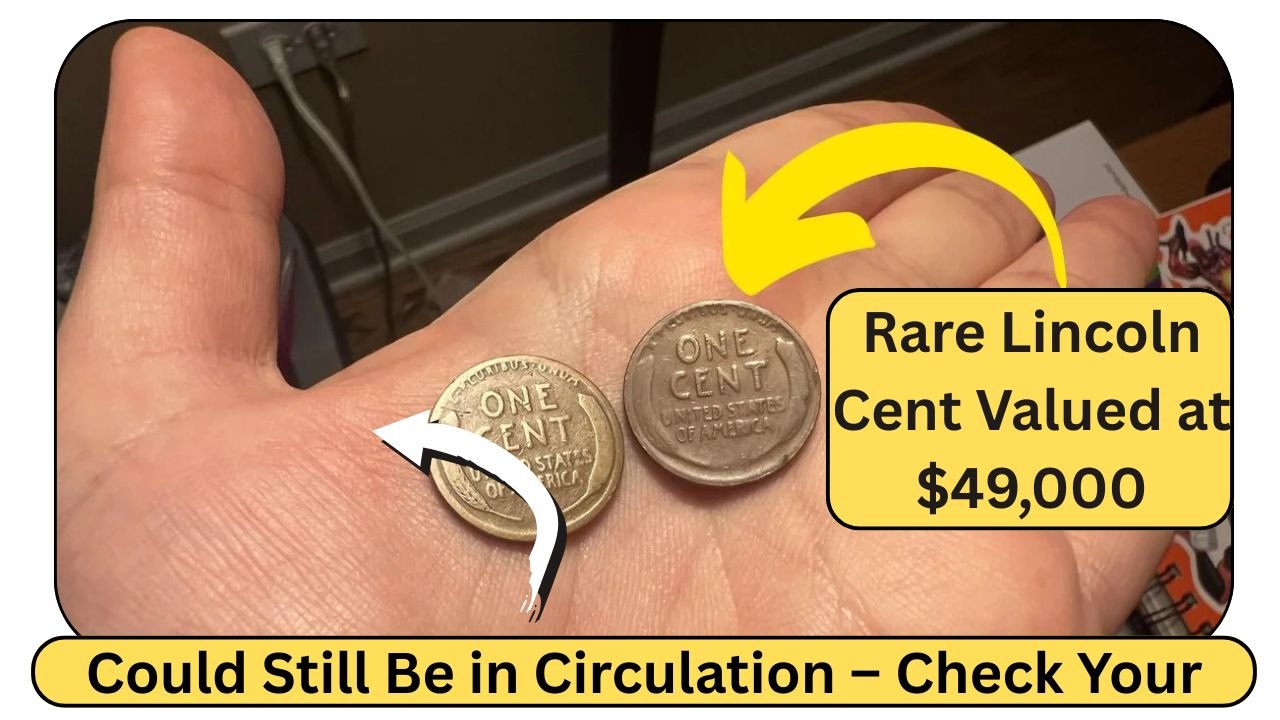Imagine finding a penny in your change worth $49,000! The Lincoln Wheat Penny, a small coin with a big history, is making waves in 2025 as collectors hunt for rare versions still in circulation. Minted from 1909 to 1958, these pennies feature Abraham Lincoln on the front and wheat stalks on the back. While most are worth just a few cents, rare ones, like the 1943 copper penny, can fetch thousands due to minting errors. Posts on X are buzzing about a 1943 bronze penny that sold for $840,000, sparking treasure hunts in piggy banks and coin jars across America. Here’s how to spot a valuable Wheat Penny and what makes them so special!
The Story Behind the Wheat Penny
The Lincoln Wheat Penny, first minted in 1909 to honor Lincoln’s 100th birthday, was the first U.S. coin to show a real person. Designed by Victor David Brenner, it has Lincoln’s face on one side and two wheat stalks on the other, giving it the “Wheat Penny” name. During World War II, copper was needed for the war, so in 1943, pennies were made from zinc-coated steel. But a few copper blanks were accidentally used, creating the super-rare 1943 bronze penny. Only 20–40 are known to exist, and one sold for $49,000, with top examples hitting $1.7 million in 2010.
Why Some Pennies Are Worth a Fortune
The 1943 copper penny is the star because of its rarity. Most 1943 pennies are steel and stick to a magnet, but the rare copper ones don’t. Other valuable Wheat Pennies include the 1909-S VDB (only 484,000 made, worth up to $100,000) and the 1955 Double Die, where the date and words look doubled, fetching $1,000–$33,000. Low mintage years like 1914-D or errors like the 1922 No D also boost value. Condition matters—unworn coins in “mint state” are worth more. A 1943 bronze penny in great shape sold for $840,000 in 2021
How to Spot a Rare Wheat Penny
You don’t need to be a coin expert to find a valuable penny. Here’s what to check:
- Date: Look for 1943, 1909-S VDB, 1914-D, 1922 No D, or 1955 Double Die.
- Material: Use a magnet—1943 steel pennies stick; copper ones don’t.
- Weight: Copper pennies weigh 3.11 grams; steel ones are 2.7 grams.
- Mint mark: Check below the date for “S” (San Francisco), “D” (Denver), or none (Philadelphia).
- Errors: Use a magnifying glass to spot doubled letters or missing mint marks.
| Feature | Common Wheat Penny | Rare 1943 Copper Penny |
|---|---|---|
| Material | Steel (1943) or Copper | Copper (1943) |
| Magnet Test | Sticks (steel) | Doesn’t stick |
| Weight | 2.7g (steel) or 3.11g | 3.11g |
| Value | $0.01–$1 | $49,000–$1.7M+ |
Where to Find These Hidden Treasures
Rare Wheat Pennies can still pop up in everyday change, old coin jars, or family collections. In 2019, a Massachusetts teen found a 1943 bronze penny worth $200,000 in a roll of coins. Check cash registers, thrift stores, or inherited stashes—someone might spend a rare penny without knowing! X users share stories of finding 1909-S VDB pennies in grandparent’s collections, worth thousands. Coin rolls from banks are a great place to hunt, as older pennies often get mixed in. The thrill of discovery keeps collectors and casual folks digging through change.
What to Do If You Find One
If you think you’ve got a rare penny, don’t clean it—cleaning can ruin its value. Store it in a plastic coin sleeve to protect it. Use a magnet to test 1943 pennies, and check the date and mint mark with a magnifying glass. Take it to a coin dealer or grading service like PCGS or NGC for authentication. They’ll confirm if it’s real and grade its condition. You can sell through auction houses like Heritage Auctions or eBay, but get it graded first to boost its price. Beware of fake claims online—stick to trusted sources like PCGS or the U.S. Mint website.
Keep Your Eyes Peeled
The idea of a $49,000 Lincoln Wheat Penny hiding in your change sounds like a dream, but it’s not impossible. While claims of $99 million or $4 billion pennies are myths, real treasures like the 1943 copper penny exist, with one fetching $960,000 recently. Check your change, especially for 1943 pennies that don’t stick to a magnet, or 1955 Double Dies with blurry dates. Coin collecting is a fun way to connect with history, and you might strike it rich. So, next time you get a penny, take a closer look—you could be holding a small fortune
